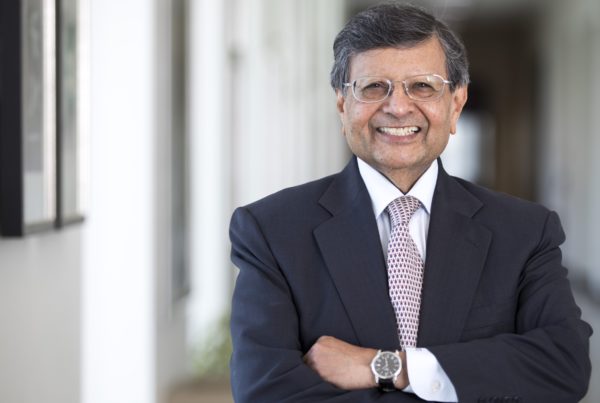Published: Feb 09, 2005 in Knowledge@Emory
In November 2004, Infiniti, a division of Nissan North America, announced the launch of their self-described “first-ever marketing campaign designed to speak directly to African- Americans.” Labeled “Infiniti in Black,” the yearlong multimedia effort gives a nod to the increasing impact and value of the black consumer. According to Target Market News, a research and news organization tracking advertising and marketing business directed at African-Americans, black households accounted for $656 billion in earned income in 2003, an increase of 3.9% over the $631 billion earned in 2002.
With companies concerned about ad expenditures, Ken Smikle, president of Target Market News, believes that African-American consumers represent one of the best niche markets for in-house and independent advertising firms today. He adds, “With rough estimates of $1.8 billion being spent by all ad agencies targeted to the African-American consumer, this is a mere drop in the bucket compared to the buying power out there.” In the advertising world, says Smikle, “few are held directly accountable for the results they produce, but that is even more so true in this arena.”
Bill Sharp, an adjunct professor in marketing at Emory University’s Goizueta Business School, notes that while serious advertising interest in the black consumer began in the 1970s, it still remained a minor focus of mainstream ad agencies. (Lattimore Moffit bought out his firm, Sharp Advertising, in 1998 when he retired from the business.) And, if the influence of the black ad professional in African-American marketing is key, then says Sharp, the lack of diversity in the boardrooms of most ad firms has played a direct role in the dearth of black targeted marketing. “There were few African-Americans working at the major agencies back in the seventies, and, unfortunately, that remains pretty much the same now.” According to Sharp, about one-half to 1 percent of African-Americans held professional positions at the top ad agencies in the early 1970s, and, he says, the figures remain pretty much unchanged today.
Kim L. Hunter, CEO of Lagrant Communications, an advertising, marketing and pr firm, agrees that there is a need to recruit more minorities into the advertising profession, noting that it will serve to broaden the perspective of the industry. In April, the nonprofit Lagrant Foundation, the organization Hunter founded, and manufacturing and services company Tyco International teamed up to form a minority job internship program for those looking to go into careers in advertising, marketing and public relations. Others in the advertising world acknowledge the lack of black, Hispanic and Asian professionals in the field. Two major trade groups for the industry, the American Association of Advertising Agencies and the American Advertising Federation, currently sponsor extensive diversity initiatives, from job fairs to internship programs.
“A diverse workforce offers a competitive business advantage, especially for global companies like Tyco that must effectively manage diversity in products, businesses, customers, and markets to achieve business results,” says Charles Young, Tyco’s senior vice president of marketing and communications. Hunter adds that he sees these recruitment efforts as an essential building block in a changing industry, particularly with African-American stalwarts in the business aging and stepping down, including Thomas J. Burrell, founder and former chairman of Burrell Communications.
African-American owned advertising firms, like Burrell, began to appear in the late 1960s and early 1970s, offering a promise that these new voices would increase the ad dollars spent on the black consumer, says Goizueta’s Sharp. Burrell and many other black-owned firms, including UniWorld Group, Carol H. Williams Agency and Mingo-Jones Advertising (which later became Chisholm-Mingo Group), ultimately became household names in the industry. Of course, says Sharp, “One has to ask the question, ‘Can whites create effective, empathic, and persuasive ads intended for consumption by African-Americans?’ Most do not seem to be able to unless they resort to cliché. And those that can often require guidance by qualified African-Americans to achieve results. Without such assistance, many are likely not to understand some important aspects of black culture. This can lead to a failed ad or, worse yet, a faux pas.”
While a number of ads have been cited in recent years as being somewhat insensitive to minorities and others have been noted for promoting stereotypical images, Sharp says that one stands out among the crowd. In 2001, Saatchi & Saatchi created a print advertisement featuring an extreme close-up of a grinning African-American man with the image of a gold Toyota RAV4 sport utility vehicle etched on one of his teeth. The image appeared on the popular free advertising postcards placed in kiosks at coffeehouses and bars across the U.S., intending to reach, what Toyota described, as a young and edgy audience. The campaign was quickly killed and Toyota became the center of considerable controversy.
Certainly, most ad firms would go out of their way to avoid this sort of negative publicity. However, says Smikle from Target Market News, the matter is often much more complex than people realize. “Business is an investment and an exercise in what you know. If you’re not African-American, Hispanic, or Asian, you are at best guessing at it. If you are speaking to a market or consumer like you, who looks like you and has the same background or is in a similar neighborhood, then you feel more confident about making assumptions about that market. You’re willing to spend more and to risk more.” Sharp concurs with Smikle’s contention, noting, “People have a habit of falling back to what they know, back to their comfort zone.”
Today, Sharp notes that the industry’s neglect of the value of the black consumer dollar is “an issue of benign neglect. Black spending is enormous, particularly when you study the consumption indices. I’ve worked in agencies for years, and often it is a matter of not being on someone’s radar.” He adds that the situation is complicated by the fact that the majority of African-Americans are concentrated in the South and Southeast, and in urban areas and in certain neighborhoods in the United States. “There are millions of whites whose primary sources of information about African-Americans are what they gain from the media. This means that many whites have little or no firsthand knowledge of, or experience with, black people.” That’s why many looked to the promise of African-American owned agencies to increase and improve advertising targeting the black consumer.
But just as the growth of black-owned advertising agencies began to heat up, the overall marketplace began to take a nosedive. With the economy contracting in the mid-to late-1990s and the ad dollars drying up, many agencies (particularly the smaller ones) sold out to larger and deeper pocketed rivals or found themselves in financial trouble. African-American agencies were not immune. One of the largest, Chisholm-Mingo Group, filed for bankruptcy protection in 2003, and finally closed its doors in April 2004.
Some of the larger mainstream firms, understanding the value of the black consumer, sought to quickly beef up their black advertising revenue by seeking out partnerships and large-scale minority interests in some of the more successful African-American owned ad firms. In 1999, Publicis S.A. bought a 49% stake in Burrell Communications. WPP Group acquired a 49% holding in UniWorld Group in 2000. Sharp notes that, for now, the partnership deals struck by these two big name black firms seem to be working out very well for all of the parties involved.
Other changes are afoot, particularly involving the way youth marketing is carried out, says Jagdish Sheth, professor of marketing at Goizueta Business School. “It is a highly homogenous segment of the market with relatively well defined messages and media,” he notes. Because of that, today’s youth market is seen as a particularly valuable advertising target. “For example, Toyota has successfully introduced a new automobile, the Scion, to this target market mostly at sports clubs and on the Internet with great success.”
Sheth notes that mainstream and African-American owned ad firms are both competing to reach this powerful and colorblind segment made up of young white, black, Hispanic and Asian consumers, all heavily influenced by popular culture, from pop and hip-hop music to hot fashion trends. (Burrell Communications is credited with coining the term “Yurban market,” or youth urban market, to refer to this group.) African-American owned agencies that once set the style for this new brand of marketing are now facing stiff competition from mainstream firms that are also shifting their efforts to more hip and MTV-influenced advertising.
And, with technology altering the way market data is collected and ad campaigns are carried out, the advertising game simply isn’t anything like it use to be. Smikle from Target Market News notes, “It’s a chaotic time for ad agencies, research firms, marketers, and pr practitioners who are accustomed to doing things in a traditional way.” But while much has changed in the industry, Smikle says that a few things remain constant. “What’s fascinating and informative about African-American marketing is that it has the longest history of best practices for any of the many niche markets.” African-American marketing as an applied business concept goes back for almost a half century, with companies like Coca-Cola and Pepsi stepping up to the plate back in the late 1940s and early 1950s. Smikle adds, “The new experts, and the winners in the game, will be those willing to do things counter to what the “big boys” have been doing for decades.”




